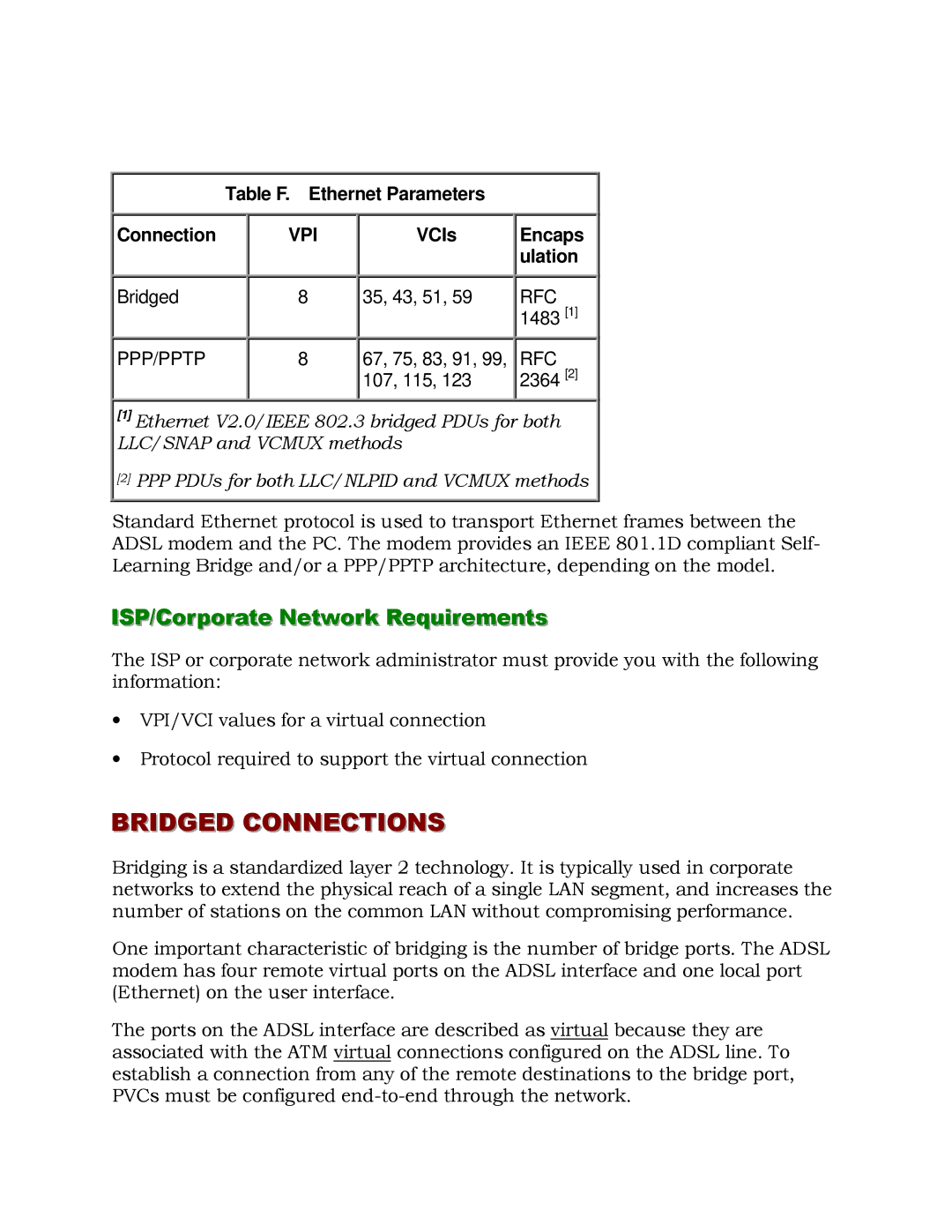
Table F. Ethernet Parameters
Connection
Bridged
PPP/PPTP
VPI
8
8
VCIs
35, 43, 51, 59
67, 75, 83, 91, 99, 107, 115, 123
Encaps ulation
RFC 1483 [1]
RFC 2364 [2]
[1]Ethernet V2.0/IEEE 802.3 bridged PDUs for both LLC/SNAP and VCMUX methods
[2]PPP PDUs for both LLC/NLPID and VCMUX methods
Standard Ethernet protocol is used to transport Ethernet frames between the ADSL modem and the PC. The modem provides an IEEE 801.1D compliant Self- Learning Bridge and/or a PPP/PPTP architecture, depending on the model.
ISP/Corporate Network Requirements
The ISP or corporate network administrator must provide you with the following information:
∙VPI/VCI values for a virtual connection
∙Protocol required to support the virtual connection
BRIDGED CONNECTIONS
Bridging is a standardized layer 2 technology. It is typically used in corporate networks to extend the physical reach of a single LAN segment, and increases the number of stations on the common LAN without compromising performance.
One important characteristic of bridging is the number of bridge ports. The ADSL modem has four remote virtual ports on the ADSL interface and one local port (Ethernet) on the user interface.
The ports on the ADSL interface are described as virtual because they are associated with the ATM virtual connections configured on the ADSL line. To establish a connection from any of the remote destinations to the bridge port, PVCs must be configured
